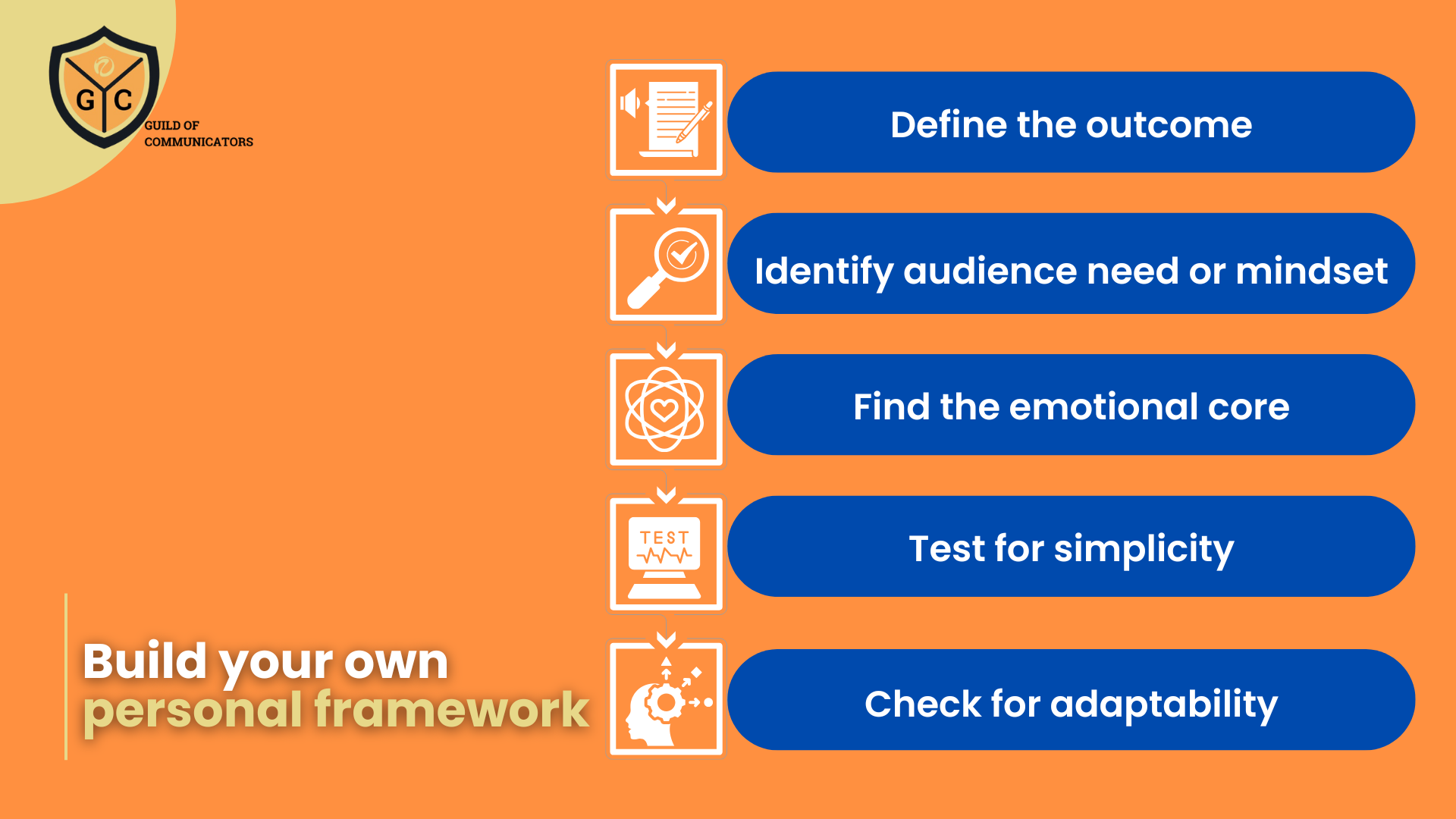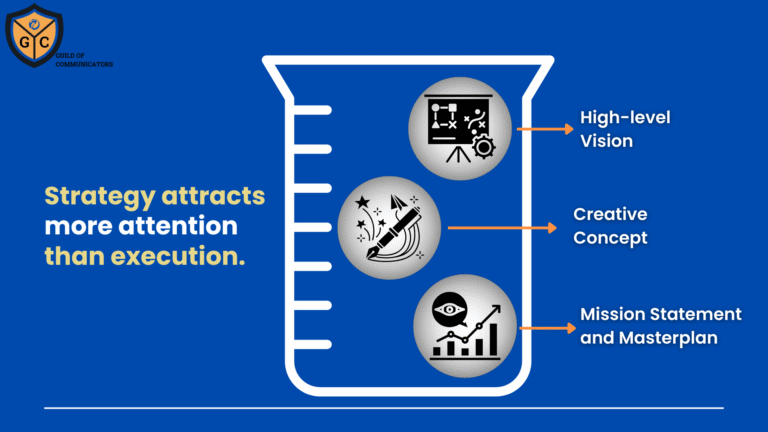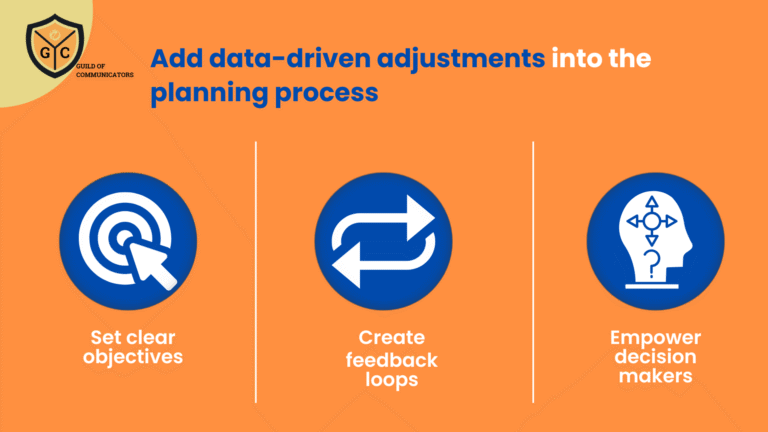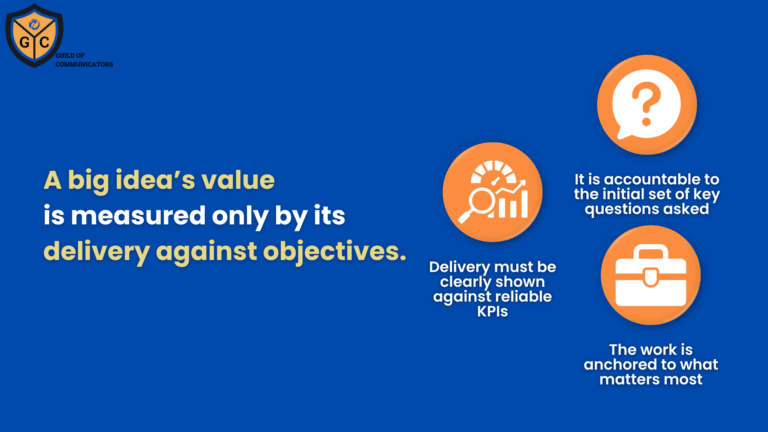Big ideas help communicators do their jobs more effectively. When a campaign or programme starts with a strong idea, it’s easier to cut through noise, hold attention, and move people towards action.
That’s because big ideas aren’t slogans. They’re tools for clarity and connection. When well-developed, they help teams stay aligned, messages stay consistent, and audience interest stay high.
But good ideas don’t always appear on demand. Without a process or structure, generating a strong concept can feel hit-or-miss. That’s where frameworks come in.
When you understand the first principles behind what makes a big idea work, you can build your own approach to developing them—consistently and effectively.
Audiences First, Always
One of the most common mistakes in campaign planning is starting from the organisation’s perspective, rather than the audience’s perspective. We ask what we want to say, what the platform requires, or what channels we already have access to.
Communication works best when it meets people where they already are. That means considering what the audience cares about, how they engage with content, and which platforms or settings they’re most open to receiving messages.
Big ideas must align with this reality. If they only work in one format or assume attention where there isn’t any, they will underperform. To create ideas that land, communicators must start by looking at the audience’s priorities, not their own.
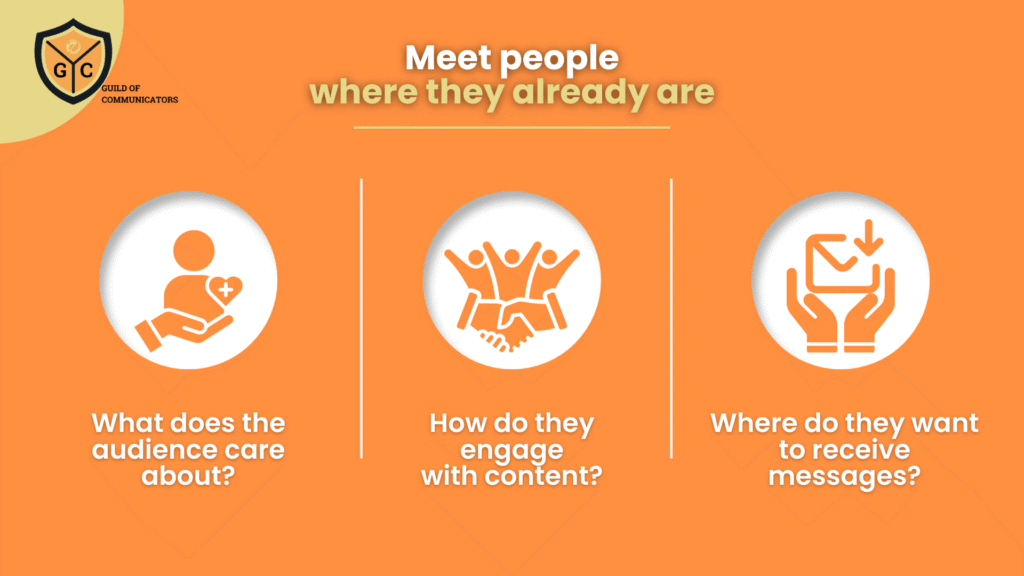
What Makes a Big Idea Work
Big ideas share a few consistent traits, regardless of title, format or topic. These traits make them useful across campaigns, content types, and outreach efforts.
Here’s what matters most:
- They are simple. Big ideas should be easy to explain and understand. Complexity reduces clarity and dilutes impact.
- They are relevant. The best ideas connect directly to something the audience cares about or is already thinking about.
- They are adaptable and sometimes unexpected. A strong idea can be used across speeches, visuals, headlines, and conversations. Often, it introduces a fresh or unfamiliar take that holds attention.
These characteristics are not a checklist. They are principles that strengthen communication when applied consistently.
First Principles Behind Every Big Idea
To build a framework that works, you first need to understand the principles behind it.
Here are the most important ones that underpin every strong big idea:
- Purpose: Every idea needs a clear outcome. What do you want the audience to do or think as a result?
- Audience Insight: The idea must be rooted in what the audience values or needs.
- Emotional Connection: Big ideas move people because they make them feel something or give them a reason to care.
- Clarity: If the idea is difficult to explain, it won’t be remembered or repeated.
- Adaptability: Ideas should be able to travel across platforms and remain impactful.
These five principles are the foundation for any useful framework you choose—or build yourself.
The Science Behind What Grabs Attention
Strong ideas don’t just work because they sound good. They work because they fit how the human brain filters information. When you understand how attention, memory, and decision-making operate, you can design messages that align with the way people process content.
Two key cognitive principles help explain why some ideas resonate more than others: salience bias and cognitive fluency.
Salience bias refers to our tendency to focus on what stands out. The brain filters thousands of inputs every second, so it prioritises anything that seems different, novel, or personally meaningful. In communication, this means people are more likely to notice ideas that break a pattern, challenge an assumption, or touch on something emotionally relevant to them. When an idea is predictable or too familiar, it blends in and gets ignored. But if it introduces a shift in perspective—or highlights something overlooked—it becomes more noticeable and worth paying attention to.
Cognitive fluency is the idea that we prefer information that’s easy to process. When something is simple to understand, we trust it more, recall it more easily, and are more willing to share or act on it. On the other hand, complex or confusing ideas create friction. That friction often leads to dismissal or inaction, even if the message is important. Big ideas that are clear, structured, and focused on a single point tend to outperform those that try to cover too much or rely on jargon.
Together, these two principles explain why simplicity, relevance, and unexpectedness aren’t just stylistic preferences but are grounded in how people pay attention. When communicators shape ideas with these principles in mind, they increase the chances that their message won’t just be seen but remembered and acted upon.
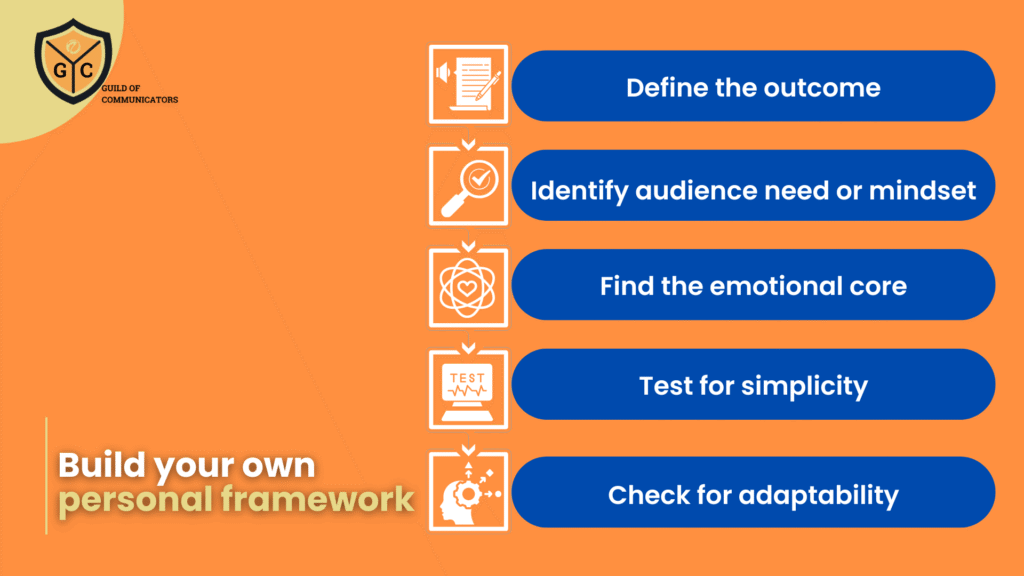
Structure Improves Creative Work
Big ideas aren’t just for creative professionals. They are tools for any communicator who needs to hold attention and drive outcomes.
When you understand the principles behind what makes an idea work—and use a framework to develop them—you’re not just being more consistent. You’re doing better work.
Frameworks help you apply insight with discipline. That’s how you create campaigns that resonate, and communication that matters.
Here’s how you can build your own personal framework using the principles above. Use this step-by-step approach:
- Define the outcome. Be specific about what you want the audience to think, feel, or do.
- Identify the audience’s need or mindset. What problem, belief, or question do they have?
- Find the emotional centre. What feeling, value, or tension can the idea tap into?
- Test for simplicity. Can you explain the idea in one sentence? If not, refine it.
- Check for adaptability. Could this idea be used in multiple formats and still work?
You can use this checklist before campaign development or during idea testing. Over time, it becomes a habit that strengthens the quality of your communication work.
*****
Join the Guild of Communicators at www.gocommunicators.com.
The Guild of Communicators (Go Communicators) stands as the preferred community for communicators seeking to elevate their craft. Through our Academy of Excellence, we provide best-in-class frameworks, fit-for-purpose resources, and opportunities that support members in achieving professional excellence.
We provide the following resources, tools and opportunities to members:
- Best-in-Class Resources: We provide our members with access to frameworks, playbooks and tools that empower them to achieve and maintain professional excellence.
- Continuous Learning and Growth: Through our comprehensive training programmes, workshops, delivered digitally, 24/7 and in-person, we support the ongoing professional development of communicators.
- A Supportive Network: GOC fosters a vibrant community where communicators can connect, collaborate, and support each other, creating a network that champions mutual growth and success.
- Shared Knowledge and Expertise: Our members benefit from the collective wisdom and experience of a diverse group of communication professionals, enhancing their skills and perspectives.
Go Communicators is dedicated to amplifying the impact and value that communicators bring to their organisations, highlighting their crucial role in driving success and growth.
We equip our members with the strategies and tools needed to become influential leaders and business partners within their organisations, enhancing their ability to drive positive change and outcomes.
Through our support and resources, communicators can demonstrate clear, measurable outcomes that showcase their value and impact, reinforcing their importance to their organisations.
Join the Guild of Communicators at www.gocommunicators.com
Subscribe to join over 1500+ communicators and brands getting value every Tuesday while reading A Communicator’s Perspective, our weekly newsletter.

